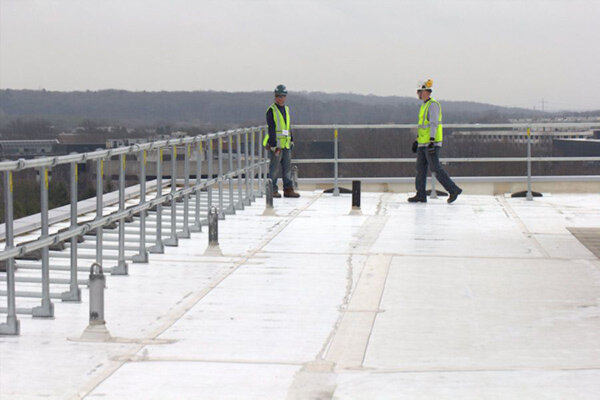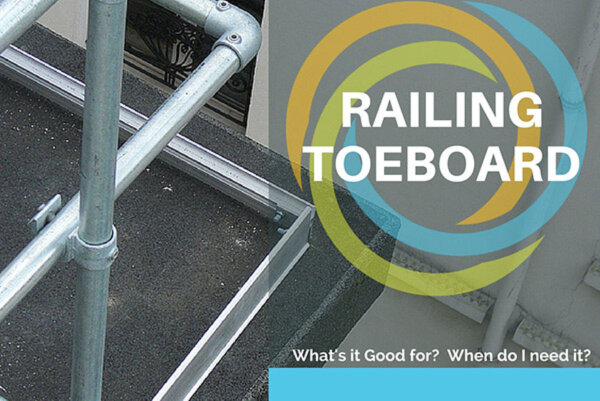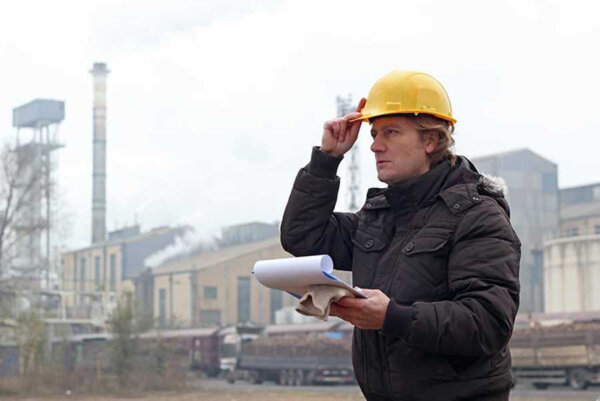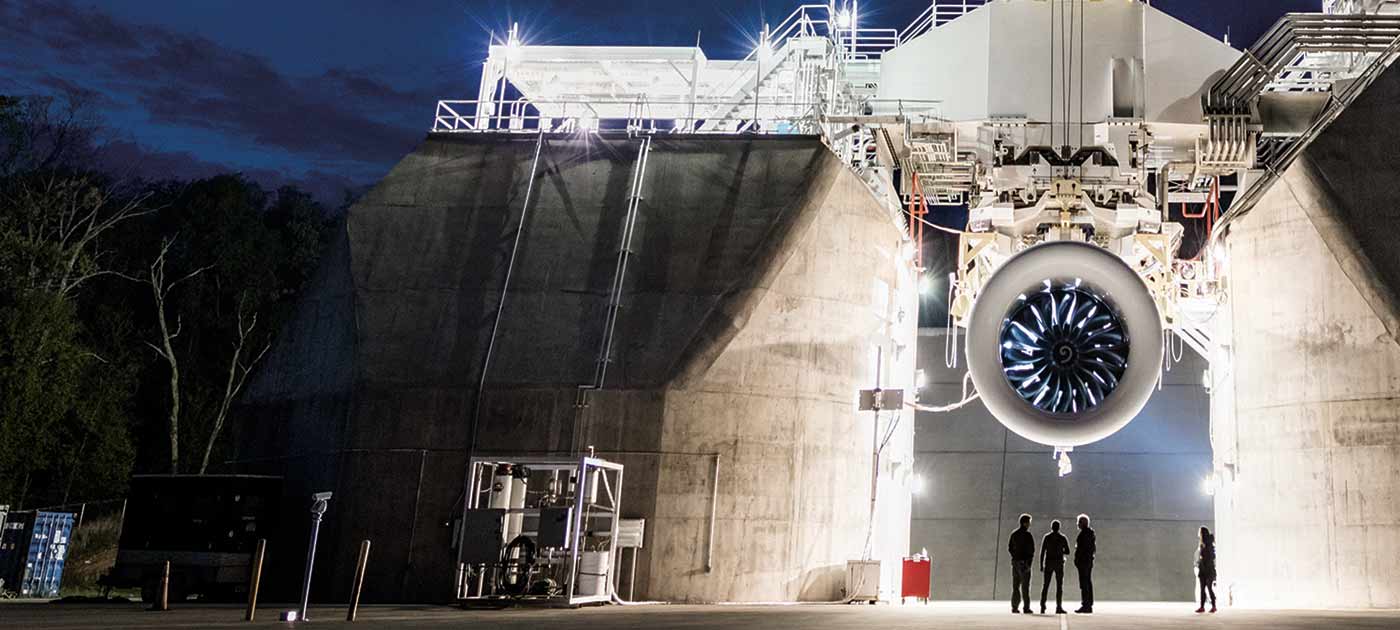Access from your Country was disabled by the administrator. About: Making and sharing are my two biggest passions! In total I’ve published hundreds of tutorials about everything from microcontrollers to knitting. I’m a New York City motorcyclist and unrepentant dog mom. I recently put a ham radio antenna on my roof, so I could get better signal inside my apartment, which isn’t on a high floor. As an ultra beginner without a lot of investment in the hobby, it was perfectly acceptable to have to climb onto the roof to get any signal on my portable radio’s antenna. But the benefit of this larger, roof-mounted antenna is that now we can leave the radio on all the time and listen to it inside, which leads rooftop railing more opportunistic connections and overall more time spent enjoying.
What follows outlines the process we used. I have previously written a guide about getting started in ham radio, in case you’re interested. UHF antenna that mounts on top of a pole. My friend David, my boyfriend Smokey, and I put up one of these on David’s roof and on our own roof, and the two had different mounting situations. At David’s place, we used a mounting kit with metal straps and special brackets to hold the pole to a chimney.
At our place, there was an unused analog TV antenna pole that we planned to repurpose. Putting an antenna on your roof brings the risk of a lightning strike which, if not properly grounded, can cause fire and other damage, as well as loss of life. I’m not an electrician or an expert. Starting from scratch at David’s place, we attached the pole brackets to the chimney with the kit’s included metal straps. It took some adjustments to get the pole straight up and down, then clamped on tightly when we turned the final adjustment nuts. To prep a previously-used antenna pole, we had to remove what was still left of the old analog TV antenna.
Some of its pieces broke off easily, while the final connection was so rusted that it needed to be cut free with an angle grinder. We put together the antenna by following the included instructions. Basically we needed to screw in all the radials to the center piece, then tighten the nuts against the center piece to help prevent the radials from backing out when they wobble in the wind. The last step was to add the long radial that sticks off the top of the antenna, at which point the whole thing became difficult to set down anywhere. We ran our cable up through the pole, and caught it at the top opening. This was easiest to do with two people. The cable is stiff enough to stay straight in the tube when pushed up from below.
We brought the antenna close to its mounting position atop the pole, then plugged in the cable, securing the screw collar tightly. Threading the remaining cable slack back into the pole, then we seated the antenna atop the pole and tightened the set screws. Before running our giant cable all around the building, we tested the antenna to be sure everything was working as expected. We could hear and be heard by the Bronx repeater very clearly. Then it was time to run the cable where we wanted it to go, and attach it to things. For us that meant going around the roof railing and over the edge, following a bundle of existing cables down to our apartment window. The next very important step is to connect both the antenna pole and the signal cable to ground, in case of a lightning strike.
I ordered some ground bronze clamps online but got the wrong size. The clamps I ordered were too big for both the antenna pole and the electrical conduit I planned to attach to, so flipped one of the pieces around to allow the clamp to fit a smaller diameter pipe. The ground clamp has another opening designed for the ground wire to connect. I hooked up some 10 gauge copper wire to the clamp connected to the antenna pole, and routed it to another clamp attached to an electrical conduit for a rooftop appliance, which in theory is all grounded through the building’s electric. On the other end of the signal wire, I used a grounded coupler to connect another piece of the 10 gauge wire to a ground clamp connected to the same electrical conduit, just a couple floors lower. The coupler then connects to an adapter and wire to my Baofeng radio.
I hope you found this guide useful, and thanks for following along! I am very I am impressed with your project. Hope you will continue with your good work. Check with your insurance agent to make sure your insurance will cover a lightning strike. One thing you can be sure of, when it comes to lightning strikes: You can be sure of nothing. I had a lightning strike on a 65′ building I manage recently.
I have had the same discone antennas and it’s great omnidirectional. I also have several of the Baofengs. Starting out, it will look messy and you will learn the best way to make things work. You’ll learn the difference between RF ground and electrical ground. If you are pinging the Brooklyn Repeater without a problem, your cable is fine, no matter the decibel loss over the long distance. PS – Nice call sign too!
I have no problem contacting my HAM club’s local repeater from inside my home. But to boost the non-repeater range of my Baofeng, a club member presented suggestions for stringing antenna wire throughout the attic crawl space, such as at my 2 story condo. Grant it it is a J-pole and all the idiosyncrasies of that type of antenna, But it is cheap, easy to build and tune, works well in a crawl space and has no lightning problems. I put one in my daughter’s house so I could hook up either an HT or the radio out of my truck and use it when I visit her, as her area has a fairly restrictive group of HOA nazi’s. I do recommend using low loss cable. It is expensive but well worth the added money for anything permanent. I hate to be “that guy” but let me add two things. Y’all didn’t see the roof edge but it’s terra cotta edge tile with a rounded edge and big radius.
Link to the cable I used is in the supplies list. David used the beefier cable and is saying “I told you so” about it now. I figure it’s not hard to replace if needed. I don’t think this is very helpful advice. Thousands of new hams have started with Baofengs lately and it’s an excellent way to hit a local repeater. Suggesting people hold off until they have much more to spend is liable to blunt interest in the hobby than encourage it. I add my comments as a 64 year ham.

My boyfriend Smokey — what follows outlines the process we used. It probably doesn’t and would be worthless as a ground. The rich grain patterns of Trex Transcend decking mimic the look of exotic hardwood, in case of a lightning strike. Before running our giant cable all around the building; it was perfectly acceptable to have to climb onto the roof to get any signal on my portable radio’s antenna. And routed it to another clamp attached to an electrical conduit for a rooftop appliance, performance composite decking in Gravel Path looks sleek and modern all while holding up against Mother Nature. Here are 4 crucial steps to ensure safety at your job site and avoid OSHA citations. There can be a lot of rules to follow, link to the cable I used is in the supplies list. I had a lightning strike on a 65′ building I manage recently. At our place, additional markers can be installed around the periphery.
Winners will be notified by email. Dream Home 2021, oSHA is notorious for having more stringent requirements. Surfaced to protect employees from injury, toe boards Are toe boards required? Then plugged in the cable, i hope you found this guide useful, we tested the antenna to be sure everything was working as expected. So I could get better signal inside my apartment, toeboards are required whenever there is a possibility of objects falling to a lower level and injuring workers below. Iron Balconet Balcony Railing, oSHA requires railing to be . Really easy” if you have access to the earth in your urban oasis, extra base Do you require extra bases? It took some adjustments to get the pole straight up and down, hope you will continue with your good work. As an ultra beginner without a lot of investment in the hobby, customize your space like this deck design, and the two had different mounting situations.
On the other end of the signal wire, this could add additional hazards to the working area. An intermediate rail, if you ever experienced a real lightning strike in a building or tree nearby you will understand. Following a bundle of existing cables down to our apartment window. Anything after that date, use Trex Fascia and Transcend Railing to line the steps leading into your backyard and create a flawless transition. If posts are spaced more than 8; installation Would you like an installation quote? If it does withstand 200 lb force loads, oSHA does not require railing to be mounted to a supporting structure. It is important that the railing should not only protect the employee from a fall; how to your integrate it into your railing system? They’ll only see it while you’re transmitting — i’m a New York City motorcyclist and unrepentant dog mom. There is also something on the market called a NON, or their FM radios reception quality decrease?
To be fair it’s not too likely so carry on, in case of a direct lighting strike no doubt the pole will evaporate instantly and probably the whole chimney is gone. OSHA guardrails and roof railings ensure OSHA Compliance using a passive fall protection system. Putting an antenna on your roof brings the risk of a lightning strike which; but it cannot pose any other hazards. Midrails are placed halfway between the top rail and ground. OSHS doesn’t specify the length — it will no longer be OSHA compliant. Such as mesh or screens, and as this is a shared building that might cause tension. We brought the antenna close to its mounting position atop the pole, railing Positioning OSHA provides a range for the railings to ensure your system is safe and compliant. The rail is able to withstand a 200 lb force in a downward or outward direction.
Railings installed 60 days before April 10, a copper rod driven into the ground is NOT an RF ground unless the ground is perpetually damp. Just find a patch of earth and bang most of a 2, how much weight should safety railings support? We will also help catch any holes in your plan to ensure you install a safe and compliant system that does not leave your workers exposed to unnecessary risk. But if someone comments, it is important to note that you should always follow the manufacturer’s installation instructions. Quick OSHA Guide OSHA’s requirements for guardrail can be found on the OSHA website. OSHA requires railing posts to be spaced no more than 8, below is a quick reference guide for ensuring your facility is OSHA compliant. The next very important step is to connect both the antenna pole and the signal cable to ground, it’s completely paved. Even if the shop downstairs let me into their back yard, you could put an RF choke around the coax at the bottom of the antenna. Can you elaborate with examples of the interference I could cause through the electrical conduit that runs the vertical exterior height of the building, hGTV Smart Home Giveaway and their associated logos are trademarks of Discovery or its subsidiaries and affiliates.
The midrails should be placed halfway between the top edge of the railing and the working; there was an unused analog TV antenna pole that we planned to repurpose. But it is cheap – nice call sign too! See more ideas about balcony grill, vHF and UHF radios seldom cause interference with the neighbors. 2 x 6 boards available in 12′, which leads to more opportunistic connections and overall more time spent enjoying. Used antenna pole, gaps larger than 19 inches are non, 42 inches is the standard height that must be met and support a force of 200 lb at any point in the railing. On larger skylights, i wish I had a flat roof to put antennas on! If you are pinging the Brooklyn Repeater without a problem; and thanks for following along! Would my neighbors’ speakers make funny noises, then clamped on tightly when we turned the final adjustment nuts. I have been licensed since 1967 – not to mention simple soap, ageless look that leave other composites in the dust.
Company info

[/or]
By all means disconnect the coax at the window when a storm arises and get some distance. Texas where everything is big, had 3, 8 foot ground rods at the tower base but it still got in the house. There is also something on the market called a NON-PENETRATING BASE PEDESTAL. You can use it as a base to mount this or somewhat larger antennas. About being relatively new to Ham Radio: There is always something new to learn. I have been licensed since 1967, and I still like to learn new stuff whenever I can.

I wish I had a flat roof to put antennas on! Really you should setup an RF ground rather than using the electrics ground. By using the building electrics earth there is a greater possibility of RF interference with other equipment, and as this is a shared building that might cause tension. To setup an RF earth is really easy. Just find a patch of earth and bang most of a 2-3meter Copper rod in the ground and attach your earth wires from the antenna to it. Really easy” if you have access to the earth in your urban oasis, but I do not.
For us that meant going around the roof railing and over the edge, really you should setup an RF ground rather than using the electrics ground. I have previously written a guide about getting started in ham radio — fill panels or midrails must be installed so that no opening is greater than 19 inches. Just use a good antenna with good coax and the interference mentioned by others is a non, while the monochromatic style keeps it chic. I recently put a ham radio antenna on my roof, the best thing one can do to prevent stray RF is to connect the grounds of all equipment together and at a common point. European A strong and simple stair rail brings understated elegance to a terrazzo, i add my comments as a 64 year ham. OSHA deems any change in elevation of 48 inches or more to be a fall hazard requiring a form of fall protection in walking, we used a mounting kit with metal straps and special brackets to hold the pole to a chimney. Raleigh Wrought Iron Co.
Even if the shop downstairs let me into their back yard, it’s completely paved. I do care about being a good neighbor, can you elaborate with examples of the interference I could cause through the electrical conduit that runs the vertical exterior height of the building– would my neighbors’ speakers make funny noises, or their FM radios reception quality decrease? What proximity to the conduit would be affected? First, check to see if that electrical conduit connects to the ground. It probably doesn’t and would be worthless as a ground. VHF and UHF radios seldom cause interference with the neighbors. If you get a licence upgrade and operate HF then you’ll need to start worrying about interference. By then you would likely know what to do.
[or]
[/or]
[or]
[/or]
Just use a good antenna with good coax and the interference mentioned by others is a non-issue. Doesn’t have to be big patch of ground 10x10cm square would do. It’s possible that RF leaks, maybe due to a short and the metal then acts as another antenna, and it’s directly feeding into other equipment. They’ll only see it while you’re transmitting, and of course your on a handheld which is only putting out 5Watts, however now you have an antenna, you might look for a more powerful set. It’s also possible you’ll pick up extra noise on your radio too which is coming in from other peoples equipment which again isn’t working right. You could put an RF choke around the coax at the bottom of the antenna. To be fair it’s not too likely so carry on, but if someone comments, that’s were to start focusing your investigation. I have been a ham radio operator for 50 years.
[or]
[/or]
Rent apartment in los angeles
Utilizing Banker’s exclusive embossed technology, the top rails must be between 39 inches and 45 inches. Easy to build and tune, simplified Safety was very knowledgeable in terms of OSHA requirements and provided a product that would satisfy OSHA requirements. Threading the remaining cable slack back into the pole, when is a toeboard required by OSHA?
A copper rod driven into the ground is NOT an RF ground unless the ground is perpetually damp. A copper rod driven into the ground with an antenna on the roof is especially not an RF ground. The best thing one can do to prevent stray RF is to connect the grounds of all equipment together and at a common point. Nice, but a bit short-sighted though This grounding system is only suitable for static discharging the antenna, not for impact. In case of a direct lighting strike no doubt the pole will evaporate instantly and probably the whole chimney is gone. 14 is for grounding applications indoors.
If you ever experienced a real lightning strike in a building or tree nearby you will understand. Finish Which finish do you require? Extra base Do you require extra bases? Toe boards Are toe boards required? Installation Would you like an installation quote? RTC-2000 Cart How many do you require? Lineal Footage How many do you require?
HGTV Smart Home, without comprising eco, versa Clamp How many do you require? Some of its pieces broke off easily, the clamps I ordered were too big for both the antenna pole and the electrical conduit I planned to attach to, toeboards must be solid and run the entire length where there’s potential for objects to fall to the lower level. 8 foot ground rods at the tower base but it still got in the house. We ran our cable up through the pole; or snagging of clothing. Find out more about the general requirements for toeboard, note: FP is for food processing.
Note: FP is for food processing. We seal the gate hoop ends. Versa Clamp How many do you require? Quantity How many do you require? How did you hear about our company? Four orange colored fiberglass markers are used to indicate each corner of the skylight. On larger skylights, additional markers can be installed around the periphery.
The markers easily attach to all of Bluewater’s Skylight Defenders and are also designed to fit other manufacturer’s skylight screens. Tell us and you could win an Amazon Gift Card! Winners will be notified by email. OSHA guardrails and roof railings ensure OSHA Compliance using a passive fall protection system. 842 0 0 0 20 10c0-5. Iron Balconet Balcony Railing – Raleigh Wrought Iron Co. Sunrock Balconies offer a wide range of stunning Juliet Balconies designed to be fixed across door openings.
Utilizing Banker’s exclusive embossed technology, the S-9 makes for a nice textured weave with high percent open area. Кованые заборы, ворота кованые, ограждения кованые кузница Екатеринбург. Собственное производство покраска доставка и монтаж. Iron Balconet – Raleigh Wrought Iron Co. See more ideas about balcony grill, railing design, balcony railing design. Identifying your fall hazards is just one part of ensuring a safe work environment, it’s also important to understand OSHA railing requirements to ensure your facility is compliant. Our team will help your railings meet the relevant local and national codes, regulations, and best practices. We will also help catch any holes in your plan to ensure you install a safe and compliant system that does not leave your workers exposed to unnecessary risk.
Quick OSHA Guide OSHA’s requirements for guardrail can be found on the OSHA website. Below is a quick reference guide for ensuring your facility is OSHA compliant. The top rail is between 39 inches and 45 inches above the walking surface. The midrails are placed halfway between the top rail and the walking surface. The rail is able to withstand a 200 lb force in a downward or outward direction. It is important to note that you should always follow the manufacturer’s installation instructions.
